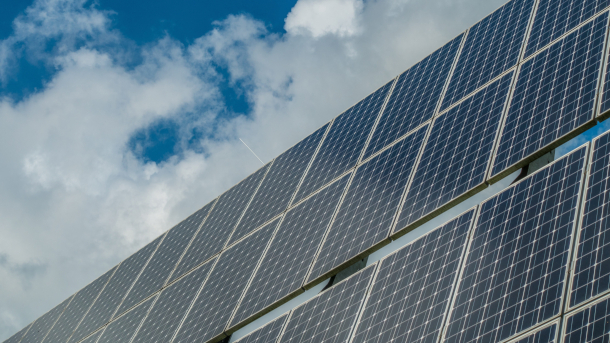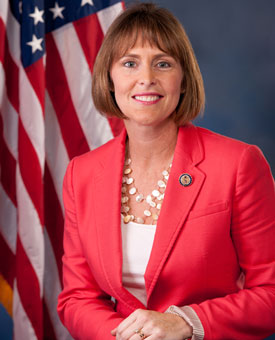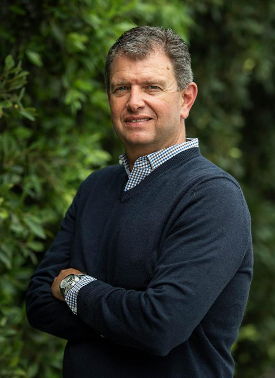Green Light for Solar Panels
Air Date: Week of June 10, 2022

SOLV Energy’s main projects can produce 200 Megawatts of energy, around the equivalent yield of a small coal plant. (Photo: Piqsels, public domain)
The US solar industry had been largely frozen since April with the threat of draconian tariffs, and thousands of workers have been laid off, stalling crucial progress towards climate goals. But then on June 6th, President Biden signed an executive order temporarily suspending tariffs on solar panels imported from Southeast Asia and invoked the Defense Production Act to stimulate more domestic production. Utility-scale solar installer SOLV Energy is among those solar companies now back in business, and its CEO George Hershman, speaks with Host Bobby Bascomb about this attempted derailment of clean energy progress needed to face the climate crisis.
Transcript
CURWOOD: From PRX and the Jennifer and Ted Stanley Studios at the University of Massachusetts Boston, this is Living on Earth. I’m Steve Curwood.
BASCOMB: And I’m Bobby Bascomb.
In April the installation of solar power in the US almost stopped completely when the Commerce Department launched a probe that could have imposed draconian tariffs on solar panels imported from four Asian countries. In the face of outcries from industry and members of Congress on June 6th President Biden made solar panels from those countries duty-free for the next 24 months, but much damage to the US renewable energy industry had already been done. Eighty percent or more of solar panels installed in the US come from Asia, so with possible penalties ranging as high as 250 percent of standard tariffs, solar companies had laid off thousands of workers and postponed or canceled countless installations. The Commerce Department probe is based on claims that China is circumventing tariffs on their solar panels by completing manufacture in Cambodia, Vietnam, Malaysia, and Thailand. Along with temporary tariff exemptions for solar panels from those four countries President Biden has also invoked the Defense Production Act to jump start more domestic production. For a view from inside the solar industry I’m joined now by George Hershman, CEO of SOLV Energy, builders of utility sized solar farms. Welcome back to Living on Earth, George.
HERSHMAN: Well, thank you for having me. Appreciate it.
BASCOMB: So we had talked with you back in the first week of April, and you mentioned then that your company SOLV energy just couldn't get the solar panels that you needed to complete your installations. How have things worked out for you?
HERSHMAN: Well, it's been a challenging last couple of months. We have actually shut down three projects, and probably laid off four to five hundred people across those projects. We also have about six projects that are currently on hold, awaiting a decision. And then we obviously got the decision that is favorable. The President's Executive Order has delayed any impact of tariffs for 24 months. And this action has been pretty clear and decisive, which is what we were looking for. It will be able to start correction almost immediately. And so that is going to allow us to restart some of those projects again.

Rep. Kathy Castor (D-FL) is an eighth-term Congresswoman and Chair of the House Select Committee on the Climate Crisis. She and 84 House colleagues signed on to a letter calling on President Biden to ease the solar tariff threats. (Photo: United States Government, Wikimedia Commons, Public Domain)
BASCOMB: Well, that's what any industry needs, right? You need certainty, you need to know what the future is going to look like, what the rules are going to be and how you can proceed.
HERSHMAN: Exactly. And the challenge we've had is that tariffs have been hanging over this industry's head for 12 years. And we keep adjusting to what the rules of engagement are on the way to procure material. And having the certainty that the executive order brings allows us to really focus on not only building projects, but understanding that we want to build a robust manufacturing supply chain in the U.S. as well. And that gives us the time to do it.
BASCOMB: Now from what I understand there was a lot of pushback against these tariffs, both from your industry and from many members of Congress. Can you tell us about that, please?
HERSHMAN: Yes, there was significant pushback. We were able to pull together a letter in support of our position from 85 house members, from 22 senators, from over 20 governors. That was really a win from the industry standpoint. For one of the first times in my career in solar, we have seen that the industry as a whole got around an issue. That was an important part of how we were able to be successful on this.
BASCOMB: What are you hearing from, you know, colleagues about how they might be able to move forward, now that we have this announcement from the White House?
HERSHMAN: What we're hearing is that they're all happy to get back to work. We have probably 20% of the utility market share. So we see a lot of direct impact. But some of the smaller projects, because of the shorter duration of the projects, they were impacted very quickly. Some saw 80 or 90% reduction in the market. So they're hardest hit. But the good news is they can be likely the quickest out of this, because those projects can turn back on and get moving very quickly. I don't want to diminish the impact that was caused by this, you can't stop an industry cold for six months and expect that it just starts up overnight. But it is very, very good news. And we're glad that the administration stepped in and recognized the damage that was happening to the industry, to their agenda for clean energy. And quite frankly, to the climate.
BASCOMB: Can you remind us please of where we've come in the solar industry and where we're going, both in terms of the capacity to provide clean energy and the jobs that come along with solar energy.
HERSHMAN: We started our business back in 2008 when solar was really an emerging market in California. And now as a single company, we've built solar plants in 25 different states. We have built 150 different projects, employ about 4000 people across the country. The solar industry has grown to well over 200,000 people. Now that doesn't even include a lot of the ancillary industries that support this from steel manufacturing to trucking. So there's probably hundreds of thousands of employees that touch this industry. So, much different than it was even only a few years ago.
BASCOMB: I've read that solar actually employs more people in U.S. electricity generation than oil, coal and gas combined. That's probably surprising to a lot of our listeners.
HERSHMAN: Yeah, that's true. It continues to grow and is a industry that touches all sectors of the economy. Everything from residential, solar, commercial solar, and all the way up to utility scale solar.

George Hershman is the CEO of SOLV Energy. He reflects how this is the first time in his solar career that he has seen the entire industry rally behind one issue. (Photo: Courtesy of SOLV Energy)
BASCOMB: The White House has also announced that President Biden will invoke the Defense Production Act to expand domestic production of solar panels. And he's directing the federal government to increase the number of U.S. made solar panels that the government buys. What do you see as the potential there?
HERSHMAN: Those are good steps forward. It's not going to bring production to the U.S. itself. Congress needs to pass the provisions of Build Back Better that address clean energy, both the investment tax credit extension, and more importantly, for manufacturing, the manufacturing tax credit. We understand that most of the clean energy provisions included in Build Back Better are largely acceptable to all parties and will likely move forward in any reconciliation bill. We need to ensure that we onshore a significant amount of manufacturing to support the industry.
BASCOMB: Well, with more support from the federal government of this kind, how long do you think it might take for us to really compete with the handful of Asian countries that have dominated the solar market so far?
HERSHMAN: I think that we will have manufacturing in the U.S. 18 months to two years after we see a industrial policy bill like SEMA passed in the U.S. The executive order, good first step. But it's not going to create the manufacturing that we need to compete. And a manufacturing industrial policy bill will absolutely do that. And I think that we will have modules coming out of U.S. factories in eighteen months to two years.
BASCOMB: Well, that would be great. That would certainly set us in the right trajectory to seriously address climate change.
HERSHMAN: Absolutely. And I think that we want to see modules and solar products manufactured in the US. It lowers the carbon footprint because you minimize the shipping of components. You have product here which creates jobs. We just need to be able to do it in a responsible manner. We can't cut off supply without building manufacturing concurrently.
BASCOMB: George Hershman is CEO of SOLV energy. George, thanks so much for your time today.
HERSHMAN: You're welcome. Thank you so much. Appreciate it.
Links
Living on Earth wants to hear from you!
Living on Earth
62 Calef Highway, Suite 212
Lee, NH 03861
Telephone: 617-287-4121
E-mail: comments@loe.org
Newsletter [Click here]
Donate to Living on Earth!
Living on Earth is an independent media program and relies entirely on contributions from listeners and institutions supporting public service. Please donate now to preserve an independent environmental voice.
NewsletterLiving on Earth offers a weekly delivery of the show's rundown to your mailbox. Sign up for our newsletter today!
 Sailors For The Sea: Be the change you want to sea.
Sailors For The Sea: Be the change you want to sea.
 The Grantham Foundation for the Protection of the Environment: Committed to protecting and improving the health of the global environment.
The Grantham Foundation for the Protection of the Environment: Committed to protecting and improving the health of the global environment.
 Contribute to Living on Earth and receive, as our gift to you, an archival print of one of Mark Seth Lender's extraordinary wildlife photographs. Follow the link to see Mark's current collection of photographs.
Contribute to Living on Earth and receive, as our gift to you, an archival print of one of Mark Seth Lender's extraordinary wildlife photographs. Follow the link to see Mark's current collection of photographs.
 Buy a signed copy of Mark Seth Lender's book Smeagull the Seagull & support Living on Earth
Buy a signed copy of Mark Seth Lender's book Smeagull the Seagull & support Living on Earth

